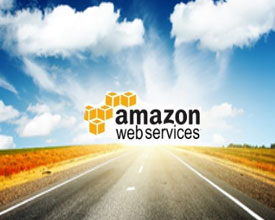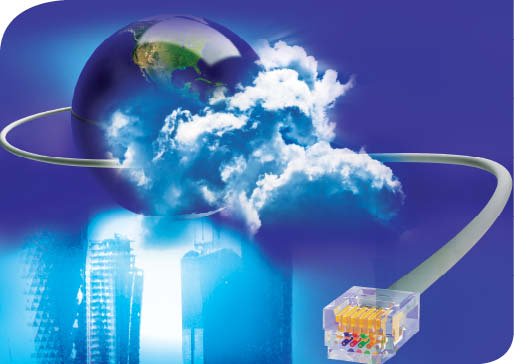- Do they own the infrastructure?
A Cloud Services provider (CSP) should ideally own their data centres and the hardware-infrastructure upon which your business-critical data is hosted. The main issue is support; if you are moving into ‘The Cloud’, you need to ensure that should a problem occur your provider can directly resolve any issue themselves, rather than having to move the problem down the line to a third party. It can also be reassuring to go and see the physical infrastructure and hardware in operation if it is located in your region.

- What equipment is used in their data centre?
The quality and performance of equipment is critical. Good quality branded hardware from global manufactures such as HP, EMC, IBM and Cisco is the preferred option. There are cheaper more obscure solutions out there, which will be reflected in the quality and level of service delivered. - Are they ISO 27001 compliant?
ISO 27001 is the best barometer available to measure whether your CSP is suitably qualified to store, manage and protect your critical business data. The ISO 27001 standard demonstrates that the CSP has the necessary information security processes and practices in place to reliably protect and safeguard your business data. - What service level agreement (SLA) is on offer?
99.9% service uptime should be offered as an absolute minimum, and your CSP should be able to demonstrate this to you. A good CSP should be able to offer you a bespoke SLA, based on your individual uptime needs. The rule of thumb is the higher the percentage, the higher the quality of service. An ISO or ITIL based Quality standard for service delivery would also be beneficial to ensure that good service delivery standards are in place. - What is the quality of their communications & Internet connections?
Your CSP should be able to provide you with highly reliable, low-latency network with performance guarantees and not simply piggy back onto a daisy chained connection. This is essentially determined by the number and the quality of Internet connections they have in addition to the design of their core network. They should ideally be connected to multiple (3 or more, BT, Virgin, Cable & Wireless) Tier One communications service providers; ideally use BGP4 service resilience for Internet service uptime and communications connections should be geographically disparate to ensure no single point of failure in the Cloud service network. - Which Cloud platform do they offer?
There are a number of Cloud platforms out there with the vast majority using Virtualisation to offer better value Cloud services. Some providers use open source software at the lower end, moving steadily upward in cost, reliability and functionality using Citrix, VMware or Hyper-V for example towards the higher end. The Platform and its reliability are important factors to take into consideration as ongoing management; support and future service integration are likely to be key service issues for any Cloud user in the longer term. - How is the service billed?
One of the major benefits of Cloud computing is that it eliminates the need for capital expenditure. Your CSP should be able to offer you a combination of dynamic, fixed or guaranteed monthly or quarterly payment options, and the service should be scalable to provide you with as much flexibility as possible. - Which industry accreditations do they hold?
Your CSP should be able to manage and maintain their Cloud infrastructure and have a proven track record of technical excellence. Common Cloud industry accreditations are available from many vendors including; Microsoft, Cisco, HP, VMware and Emc and it’s worth checking that your potential CSP holds these accreditations rather than having to rely on an off-site third-party subcontractor. - Is my Cloud resource shared?
Cloud computing falls generally into three increasingly broad categories:a) Public Cloud which is a shared, multi-tenanted resources, i.e. Hotmail, Google Drive, Office 365. This option is more suited to businesses with ‘vanilla’ non critical ICT business requirements that have no or minimal business/network process integration requirements.
b) Private Cloud & IaaS (Infrastructure as a Service) which is typically a more bespoke solution can offer dedicated or guaranteed ICT resource allocation based on your own specific business/technology needs. This option is more suited to businesses that have a higher reliance on ICT or require deeper levels of business integration across their organisation.
c) In some instances your CSP will be able to offer a Hybrid Cloud solution, which is a combination of Public and Private Cloud, where critical business applications and data is allocated to dedicated (Private) resources and less important data is allocated to shared (Public) resources. This can be a more cost effective solution in certain instances.
- Is Cloud computing right for my company?
Amidst all the hyperbole about Cloud computing, it must be considered that some companies have ICT infrastructures that are simply unsuited to this new way of providing off-site computing resources. For example, highly bespoke systems such as manufacturing and production services – that may require time-sensitive or high levels of applications integration, may prove to be problematic to move off-site into the Cloud.However, for many organisations, Cloud computing can provide real business benefits in terms of capital cost savings, lower ICT management and administration overheads, improved up-time, reduced power bills and can also help reduce an organisations carbon footprint.
10 questions to ask your Cloud Computing provider
-
Amazon Still Public Cloud Leader By a Long Shot
DT, , Cloud Computing, Uncategorized, cloud based services, Cloud Computing, cloud computing provider, cloud operation, cloud vendors, public cloud, service level agreements, 0
Amazon Web Services remains the top IaaS public cloud computing provider, offering the widest breath of services of any...
-
Pinterest Reaches Two Startup Milestones: One Good, One Bad
DT, , Digital Marketing, Uncategorized, Digital Marketing, incorporated into Pinterest, key features of Pinterest, Pinterest reached, 0
Even social-media powerhouses aren't immune to common startup troubles. The latest: A New Jersey attorney is suing Pinterest and...
-
4 c's Approach for Effective Online Business
DT, , Digital Marketing, Technology, Uncategorized, Effective Online Business, online business owners, Success of online business, Xcluesiv, 0
Commonly, online business owners believe that global audience is waiting to buy their product, so they can get overnight...
-
Master Your Critical Cloud Data for Business Advantage
DT, , Cloud Computing, Uncategorized, Cloud applications, Cloud Computing, cloud data, Cloud Data for Business, cloud environments, cloud-based business, Critical Cloud, Data as a Service, master data management, 0
Remember what first sparked business’ collective imagination about cloud computing? Its potent combination of ubiquitous access, utility pricing and...
-
Cloud computing modernizes education in China
DT, , Cloud Computing, Uncategorized, China, Cloud Computing, Cloud computing modernizes, cloud project, cloud services, education cloud, 0
Chinese cloud services provider, 3Tcloud, is implementing the country's biggest education cloud project, enabling the local authority to optimize...
-
A CLOUD IN DOHA: CMUQ offers cloud computing for scientists
DT, , Cloud Computing, Uncategorized, Carnegie Mellon University in Qatar, Cloud Computing, Cloud Computing Lab, Scientists, 0
Carnegie Mellon University in Qatar (CMUQ) pioneered the field of cloud computing in the country, founding its very own...
-
Work Shifting, Business Continuity, And The Cloud
DT, , Cloud Computing, SaaS, application hosting, Business, business continuity, Cloud Computing, computing accessibility and services, DaaS, Desktop as a Service, employment, IT, SaaS, technology, Trends, 0
Cloud computing’s inherent property of accessibility is one of the key motivators for its adoption by the general public...
-
Luring big business: How Amazon won the cloud computing game
DT, , Cloud Computing, Uncategorized, Amazon Web Services, Cloud Computing, cloud computing game, cloud services, cloud spending, Cloudability, Luring big business, 0
As Amazon.com Inc seeks to transform itself into a leading provider of technology to the world’s largest corporations, it’s...












